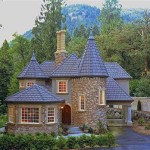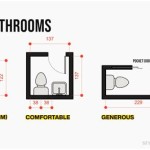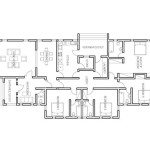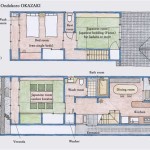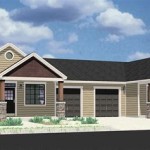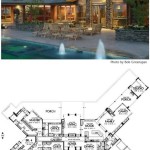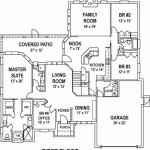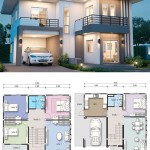Castle House Plans: Turning Your Home Into a Fortress of Dreams
The allure of castles transcends time, evoking images of strength, grandeur, and timeless elegance. While living in an actual medieval castle might be impractical for most, incorporating castle-inspired elements into a home through careful architectural design is a viable and increasingly popular option. Castle house plans offer a unique approach to residential construction, appealing to individuals who appreciate historical aesthetics and seek to create a dwelling with distinct character and a sense of permanence. These plans encompass a wide spectrum of styles, from faithful recreations of historical fortresses to modern interpretations that incorporate castle-like features into contemporary living spaces.
The process of developing castle house plans involves careful consideration of various factors, including the homeowner's desired aesthetic, the specific site conditions, and the budgetary constraints of the project. Architects specializing in this niche often draw inspiration from historical castles around the world, studying their architectural features, materials, and layouts to inform their designs. The result is a customized plan that reflects the homeowner's vision while remaining functional and compliant with modern building codes and standards. The appeal of castle house plans is rooted in the desire for a home that stands out, embodying a sense of history and providing a unique living experience.
Key Considerations in Castle House Plan Design
Designing a castle-inspired home requires a holistic approach, considering not only the visual appearance but also the practical aspects of daily living. Several key elements must be carefully addressed during the planning phase to ensure a successful and satisfying outcome.
Exterior Design and Materials: The exterior of a castle house is arguably its most defining feature. Common elements include stone facades, turrets, battlements, arched windows and doorways, and imposing entryways. The choice of materials is crucial in achieving the desired aesthetic. Natural stone, brick, and stucco are frequently used to create a sense of authenticity and durability. The scale and proportion of these elements are equally important, ensuring that the overall design is visually balanced and harmonious. Modern interpretations may incorporate contemporary materials such as concrete or steel, while still retaining the key visual cues of a castle.
The orientation of the house on the site also plays a vital role in enhancing its castle-like appearance. Positioning the house to take advantage of natural terrain features, such as hills or slopes, can further accentuate its imposing presence. Landscaping can complement the architectural design, with strategic placement of trees, shrubs, and pathways to create a sense of enclosure and privacy.
Interior Layout and Functionality: While the exterior design focuses on creating a castle-like impression, the interior layout must prioritize modern living standards and functionality. Open floor plans, spacious rooms, and ample natural light are essential for creating a comfortable and inviting living space. However, incorporating castle-inspired elements into the interior design can further enhance the overall aesthetic. This might include features such as exposed beams, stone fireplaces, arched doorways, and medieval-inspired lighting fixtures.
The arrangement of rooms should also reflect the historical context of castles, with a clear distinction between public and private spaces. The grand hall, or great room, typically serves as the central gathering space, while bedrooms and other private areas are located in more secluded areas of the house. The inclusion of a library or study can further enhance the intellectual and scholarly ambiance often associated with castles.
Integration of Modern Amenities: Despite the historical inspiration, castle house plans must incorporate modern amenities and technologies to meet the needs of contemporary living. Adequate heating, ventilation, and air conditioning systems are essential for maintaining a comfortable indoor environment. Modern kitchens and bathrooms should be seamlessly integrated into the design, blending functionality with the overall aesthetic. The inclusion of energy-efficient windows and insulation can also help to reduce energy consumption and minimize environmental impact.
Smart home technology can be subtly incorporated into the design, providing added convenience and security without compromising the historical ambiance. This might include features such as automated lighting, security systems, and climate control, all controlled through discreetly placed interfaces.
Finding and Adapting Castle House Plans
Several avenues exist for acquiring castle house plans, each with its own advantages and considerations. Homeowners can choose from pre-designed plans, custom-designed plans, or a combination of both. The best approach depends on the homeowner's specific needs, budget, and desired level of customization.
Pre-Designed Castle House Plans: Numerous architectural firms and online resources offer pre-designed castle house plans. These plans typically come in a variety of styles and sizes, ranging from small cottages with castle-inspired features to larger, more elaborate designs. The advantage of pre-designed plans is that they are generally more affordable and readily available than custom-designed plans. However, they may require modifications to suit the specific site conditions or the homeowner's personal preferences.
When selecting a pre-designed plan, it is important to carefully review the floor plans, elevations, and other specifications to ensure that they meet the homeowner's needs and expectations. It is also advisable to consult with a local architect or builder to assess the suitability of the plan for the specific site and to identify any necessary modifications.
Custom-Designed Castle House Plans: For homeowners who desire a truly unique and personalized castle-inspired home, custom-designed plans offer the greatest level of flexibility and control. This approach involves working closely with an architect to develop a plan that meets the homeowner's specific needs, preferences, and budgetary constraints. Custom-designed plans allow for the incorporation of unique architectural features, the adaptation of the design to the specific site conditions, and the integration of modern amenities and technologies.
The process of developing custom-designed plans typically involves several stages, including initial consultation, schematic design, design development, construction documents, and construction administration. The homeowner plays an active role in each stage, providing feedback and making decisions along the way. This collaborative approach ensures that the final design reflects the homeowner's vision and meets their specific requirements.
Adapting Existing Plans: Another option is to adapt an existing house plan, whether it is a conventional design or a pre-designed castle house plan, to incorporate castle-inspired features. This approach can be more cost-effective than starting from scratch with a custom-designed plan, while still allowing for some degree of personalization. An architect can help to evaluate the feasibility of adapting an existing plan and to develop the necessary modifications to achieve the desired aesthetic.
Adaptations might include adding turrets, battlements, or arched windows to the exterior, or incorporating stone fireplaces, exposed beams, or medieval-inspired lighting fixtures into the interior. The key is to ensure that the adaptations are seamlessly integrated into the existing design and that they complement the overall aesthetic.
Challenges and Considerations
While the prospect of building a castle-inspired home is undoubtedly exciting, it is important to be aware of the potential challenges and considerations that may arise during the planning and construction process. These challenges can range from zoning restrictions and building codes to material selection and construction costs.
Zoning and Building Codes: Before embarking on a castle house project, it is essential to research and understand the local zoning regulations and building codes. Many jurisdictions have restrictions on building height, setbacks, and exterior design, which may impact the feasibility of certain castle-inspired features. It is also important to ensure that the design complies with all applicable safety standards and accessibility requirements.
Consulting with local planning officials and building inspectors early in the process can help to identify any potential issues and to develop strategies for addressing them. In some cases, it may be necessary to obtain variances or special permits to deviate from the standard zoning regulations.
Material Selection and Sourcing: The choice of materials is crucial in achieving the desired aesthetic and durability of a castle-inspired home. Natural stone, brick, and stucco are frequently used, but these materials can be expensive and difficult to source in some areas. It is important to research the availability and cost of these materials early in the planning process and to consider alternative options if necessary. Modern materials, such as concrete or steel, can be used to create a similar visual effect while potentially reducing costs and improving durability.
Construction Costs: Building a castle-inspired home can be more expensive than building a conventional house, due to the specialized architectural features, the use of premium materials, and the increased labor costs associated with intricate construction techniques. It is important to develop a realistic budget early in the planning process and to carefully track expenses throughout the construction phase. Working with an experienced contractor who has a proven track record of building custom homes can help to ensure that the project stays on budget and on schedule.
Value engineering techniques can be used to reduce costs without compromising the overall design. This might involve substituting less expensive materials for premium ones, simplifying the architectural details, or optimizing the construction process.
Maintenance and Upkeep: Castle-inspired homes often require more maintenance and upkeep than conventional houses, due to the use of natural materials and the presence of intricate architectural details. Stone facades, for example, may require periodic cleaning and sealing to prevent damage from weathering. It is important to factor in these ongoing maintenance costs when developing the budget for the project.
Selecting durable and low-maintenance materials can help to minimize the need for repairs and upkeep. Proper drainage and waterproofing are also essential for preventing moisture damage and extending the lifespan of the structure.
Embarking on a castle house project is a significant undertaking that requires careful planning, attention to detail, and a commitment to quality. However, the rewards can be immeasurable, resulting in a unique and timeless home that reflects the homeowner's individual style and vision. By addressing the key considerations and challenges discussed above, homeowners can successfully turn their dream of living in a castle into a reality.

Turning Your Dream Home Into Reality Castle Custom Homes Builder Nashville

Turn Your Home Into A Castle With Stone Craftsman Cottage Style Homes Luxury House Interior Design

The Duncan Castle A Magnificently Stunning House Plan By Tyree Plans

The Duncan Castle A Magnificently Stunning House Plan By Tyree Plans

The Duncan Castle A Magnificently Stunning House Plan By Tyree Plans

The House From Beloved Aussie Castle S For 40 000 At Auction Ahead Of Relocation

Inside A 16 5 Million Tennessee Mansion That Looks Like Dreamy Castle

Tour House Beautiful Concept In Belle Meade From Castle Homes

They Bought A Huge Rundown Italian Castle And Transformed It Into Luxury Retreat Cnn

The Dwarf Castle Alpharetta Georgia Atlas Obscura
Related Posts

